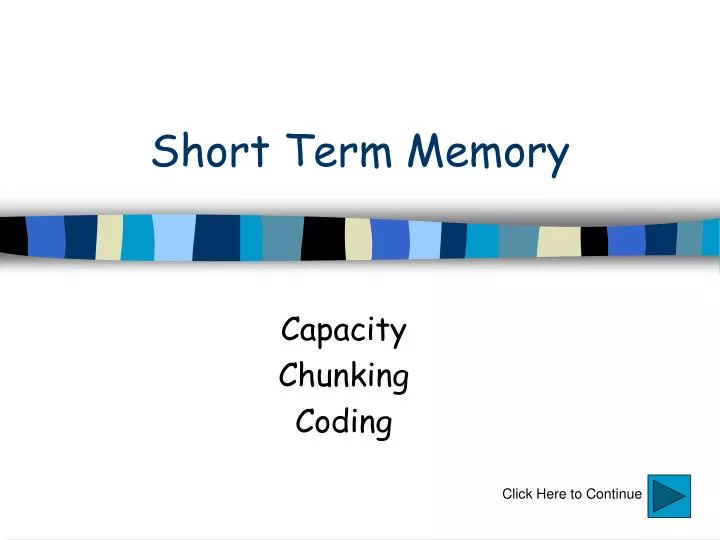

In other words, STM is a functional storage element, while WM is a set of processes that also involve storage phases. On the other side, the short-term store can be used to characterize the functioning of the WM. WM refers more to the entire theoretical framework of the structures and processes used for the storage and temporary manipulation of information, of which STM is only a component. Indeed, the WM model does not exclude the modal model but enriches its contents. In 1974, Baddeley and Hitch developed an alternative model of STM which they termed as working memory. As a consequence, there have been several sensorial-associated subsystems postulated, including the visuospatial, phonological (auditory-verbal), tactile, and olfactory domains. These subsystems involve different patterns and functional interconnections with the corresponding cortical and subcortical areas and centers. Rather than being a limitation, this restriction is an evolutionary survival advantage, since it allows paying attention to limited but essential information, excluding confounding factors. It is the classic example of the prey that must focus on the hostile environment to recognize a possible attack by the predator. Given the functional peculiarities of the STM (collection of sensorial information), the subsystems are closely related to the modalities of sensory memory. It is a storage system that includes several subsystems with limited capacity. In light of more recent research, however, the model has several problems mostly concerning the characteristics of STM, the relationship between STM and WM as well as the transition from STM to LTM. While certain authors suggested the existence of a single memory system encompassing both short- and long-term storage, after 50 years the Atkinson and Shiffrin model remains a valid approach for an explanation of the memory dynamics. In light of these findings, several memory models have been postulated. Later on, a considerable number of studies demonstrated the anatomical and functional distinction between memory processes as well as neural correlates and functioning of STM and LTM subsystems. The famous Atkinson and Shiffrin model (or multi-store model), proposed in the late 1960s, explains the functional correlations between STM, LTM, SM, and WM. This ‘raw’ sensory information undergoes processing, and when it becomes STM gets expressed in a format different from that perceived initially. In other words, SM is specific to the stimulus' modality of presentation. Nevertheless, one hears the terms STM and WM often used interchangeably.įurthermore, one must distinguish STM from the ‘sensory memory’ (SM) such as the acoustical echoic and iconic visual memories which are shorter in duration (fraction of a second) than STM and reflect the original sensation, or perception, of the stimulus. STM, indeed, is a set of storage systems whereas WM indicates the cognitive operations and executive functions associated with the organization and manipulation of stored information. The former concerns broad knowledge of facts, rules, concepts, and propositions ('general knowledge'), the latter is related to personal and experienced events and the contexts in which they occurred ('personal recollection').Īlthough STM is closely related to the concept of ‘working memory’ (WM), STM and WM represent two distinct entities. Declarative memory includes semantic and episodic memory. On the other side, information collected in the LTM storage consist of memories for the performance of actions or skills (i.e., procedural memories, “knowing how”) and memories of facts, rules, concepts, and events (i.e., declarative memories, “knowing that”).

Practically, STM works as a kind of “scratchpad” for temporary recall of a limited number of data (in the verbal domain, roughly the George Miller’s ‘magical’ number 7 +/- 2 items) that come from the sensory register and are ready to be processed through attention and recognition. Nevertheless, the two systems are closely related. The difference between the two memories, however, is not just in the 'time' variable but is above all functional. In contrast, long-term memory (LTM) may hold an indefinite amount of information. Short-term memory (STM), also referred to as short-term storage, or primary or active memory indicates different systems of memory involved in the retention of pieces of information (memory chunks) for a relatively short time (usually up to 30 seconds).


 0 kommentar(er)
0 kommentar(er)
